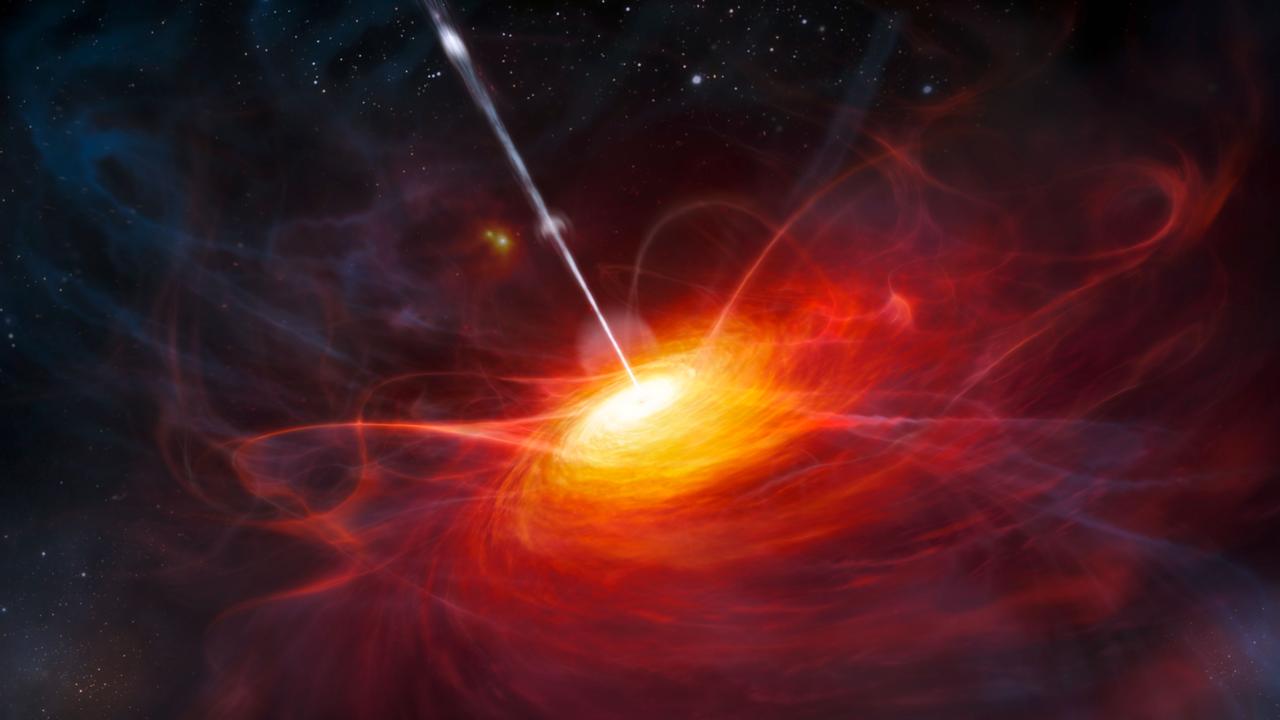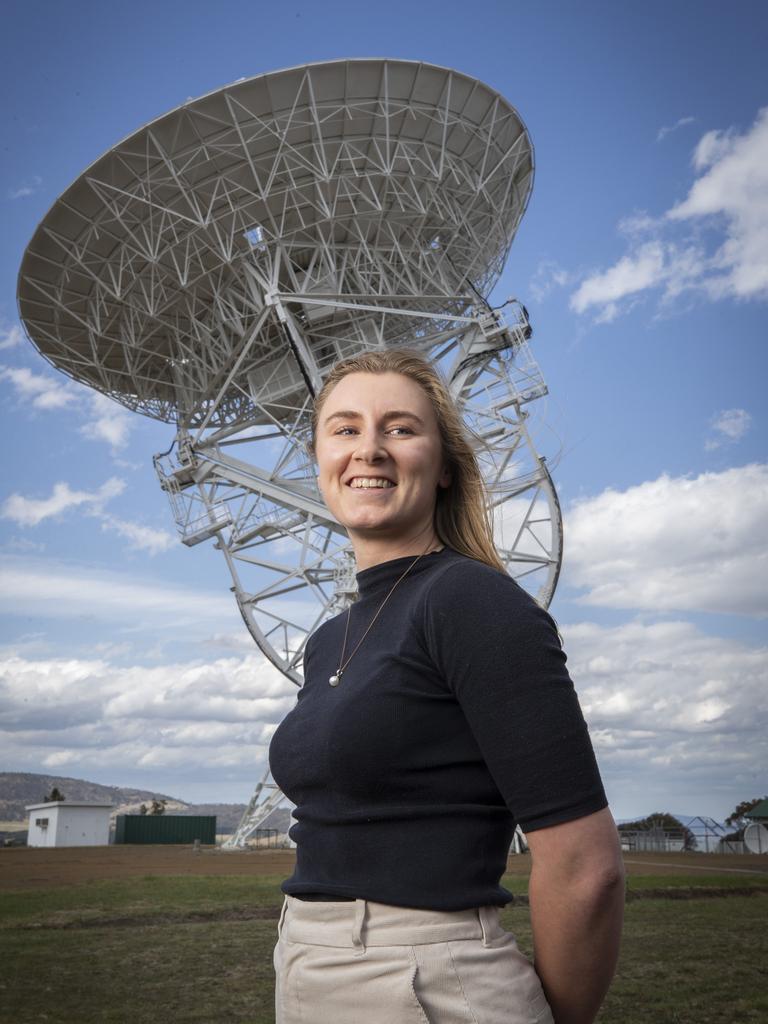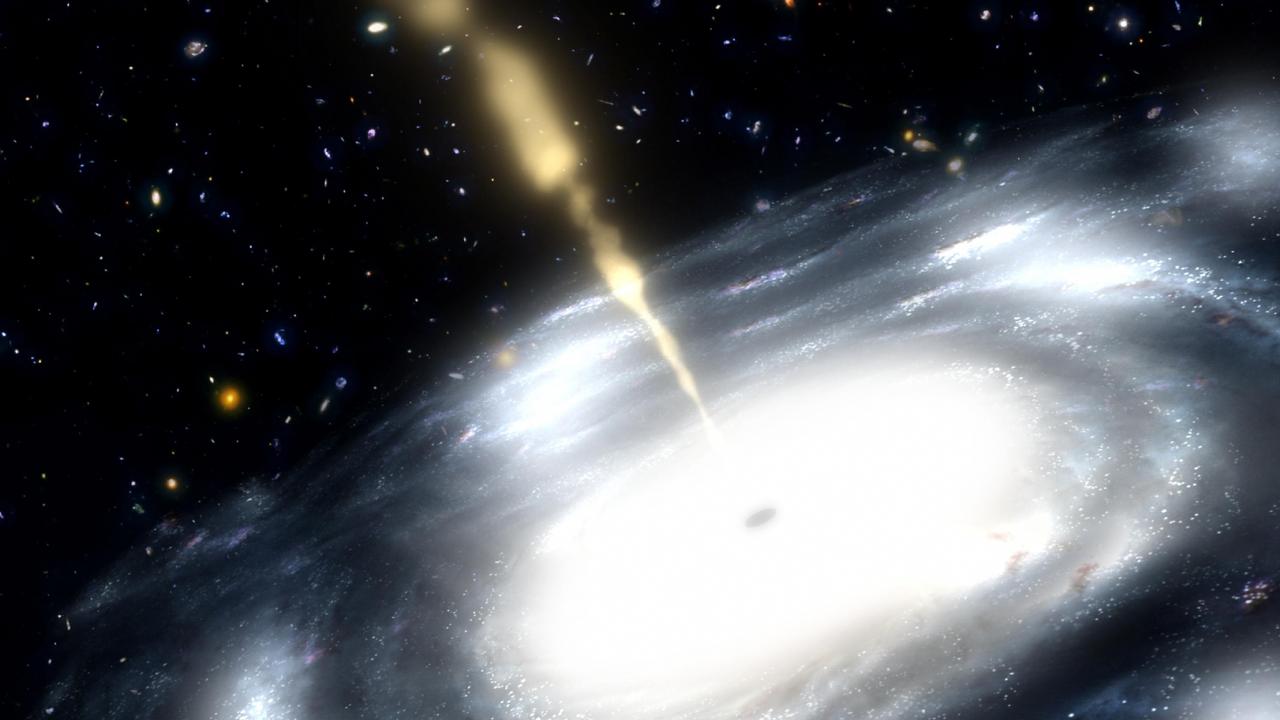From supermassive black holes to jets: UTAS PhD candidate is uncovering universe’s brightest mystery
Georgia Stewart is part of a team uncovering the brightest mystery of the cosmos – which produces the most energetic outbursts observed in the universe since the Big Bang.
Uncovering the mysteries of the brightest objects in the cosmos, Georgia Stewart is diving into the heart of galaxies illuminated by supermassive black holes.
The University of Tasmania PhD candidate is part of a small research team simulating the universe’s most energetic phenomena – active galactic nuclei.
These are highly energetic regions located in the centre of certain galaxies powered by a supermassive black hole that produce a gigantic amount of luminosity.
The luminosity forms when some of the material of accretion disks orbiting supermassive black holes is ejected away from the galactic centre in the form of bright jets.
Some of the events observed are the most energetic outbursts since the Big Bang.

“The magnetic fields around a black hole act as a funnel to shuttle a whole bunch of stuff that gets sucked into the galaxy straight out really quickly. It’s like a big particle accelerator,” Ms Stewart said.
“They’re the most energetic phenomena in the universe, but they’re not on all the time.
“Those jet particles aren’t coming out all the time – if the flow of material or the fuel stops, then the jet turns off so you get this cyclic thing of turning off and on, bursts of material that happened over scales of millions and billions of years.”

By running three dimensional simulations of the jet streams, Ms Stewart’s PhD is able to gather data and observe what happens when a jet is “turned off” and how plasma reacts and evolves.
“We think these jets come out of the most massive galaxies, especially at the centres of galaxy clusters which are a group of many galaxies” she said.
“Observations suggest they’re coming out of the really big elliptical type galaxies mostly, we’re not 100 per cent sure why but that seems to be a bit of a trend.”

Scientists still don’t know if the Milky Way has active galactic nuclei powered by supermassive blackhole Sagittarius A*.
“If you’re in it, you’re probably not going to know about it. We’re still not really sure if our galaxy has jets or not because it’s too close and you can’t see the big picture,” she said.
“My supervisor once explained that if your galaxy is a capital city like Melbourne, then the black hole at the centre is like a letterbox in an inner suburb. These jets can reach out to Perth … on the largest scales, they can be huge, they’re so vast and wide.
“Understanding these things is really important because we don’t know exactly how long the jet stays on and how long it goes off for. If you can find a dead one, what we call a remnant galaxy, you’re able to determine from that how long the active source would have been.”
More Coverage
Originally published as From supermassive black holes to jets: UTAS PhD candidate is uncovering universe’s brightest mystery




